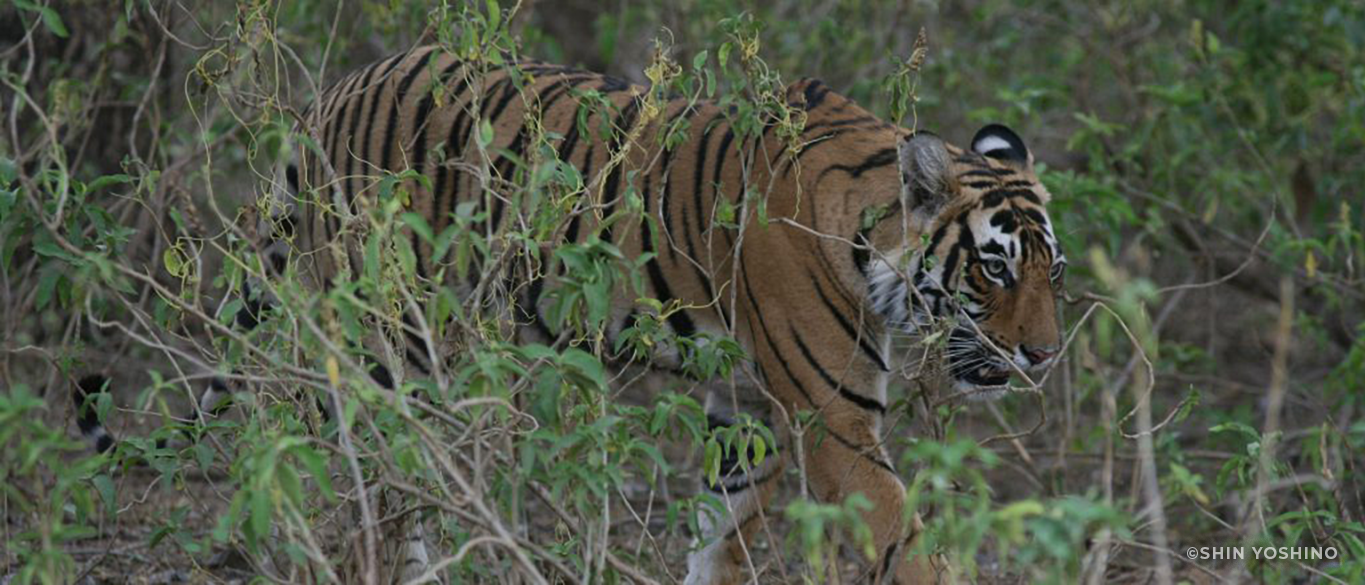General Information about Tigers
Tigers
Classification of Tiger Species
In the early 20th century, tigers had 9 subspecies (a regional group of species that exhibit particular variations among each other but are not genetically unique), and now four subspecies, Bali Tiger, Caspian Tiger, Javan Tiger, and South China Tiger are extinct in the wild.
- Panthera tigris tigris Bengal tiger
Countries: India, Nepal, Bangladesh , Bhutan - Panthera tigris altaica Siberian tiger
Countries: Russia, North East China - Panthera tigris corbetti Indochinese Tiger
Countries: Thailand, Myanmar, Laos (No longer breeding in Cambodia, Vietnam, and China) - Panthera tigris sumatrae Sumatran tiger
Country: Indonesia (Island of Sumatra) - Panthera tigris ssp. jacksoni Malayan tiger
Country: Malaysia (Pennisular)
Distribution of the Tigers
The tiger Panthera tigris was widely distributed throughout Asia in the early 20th century from Eastern Turkey to the Sea of Okhotsk off the coast of Russia. They have adapted to a wide range, from high up in the Himalayan foothills to tropical forests, from Siberian birch forests to mangrove forests where rivers meet the sea. But now, looking at the current habitat maps there is not even a shadow of the vast area they covered…what remains as tiger habitat is under threat of being lost. In addition, the population is said to have been 100,000 at the beginning of the 20th century, but it is now drastically reduced to 4,000. The South China tiger that lived between Laos and Vietnam is said to have gone extinct, with no sightings in the recent years to confirm their presence. Recently in 2016, Cambodia announced that their tigers are now extinct.
Tiger Biology and Behavior
Tigers have adapted to a great variety of habitats from hot, humid tropical forests, to deciduous forests, coniferous forests, arid forests and mangrove wetlands. Even though most cat species do not like water, tigers are different and are frequently seen laying in the water and are good swimmers. Tigers are carnivorous eating other animals (such as deer, boar, geese) and compete with other predators (such as Asiatic black bear, sloth bears, and leopards) for food. Sometimes when larger prey are not available, tigers might hunt smaller animals such as porcupine, birds, turtles, frogs and fish. Some tigers have even learned how to hunt crocodiles in the water. Tigers are ambush predators, because they cannot run long distances, so they stalk their prey for a surprise attack from the side or from behind. The tiger will use the powerful forearms to catch the prey and bite them with large teeth on their neck to restrict air flow. The success rate for hunting is low with a successful catch only once in 10-20 tries. The prey is carried into the bushes or thickets and it will cover with leaves once they finish eating. It may take several days to finish a large carcass.
Social Behavior of Tigers
Adult tigers are solitary, and only travel with other tigers when mating or when a female is raising cubs. The size of the territory will depend mainly on the available prey populations, and males have a larger territory that encompasses 3-4 female territories. Females have a pregnancy period of 100 days, giving birth to 2-3 cubs at a time. Females raise their cubs alone and provide protection and food for them until they become independent in 18-24 months. However, once they go out on their own, they must then find their own territory by fighting older, more experienced tigers. Due to shrinking habitats and natural areas that are not big enough to sustain the population, there are an increasing number of tigers that cannot reach old age.




